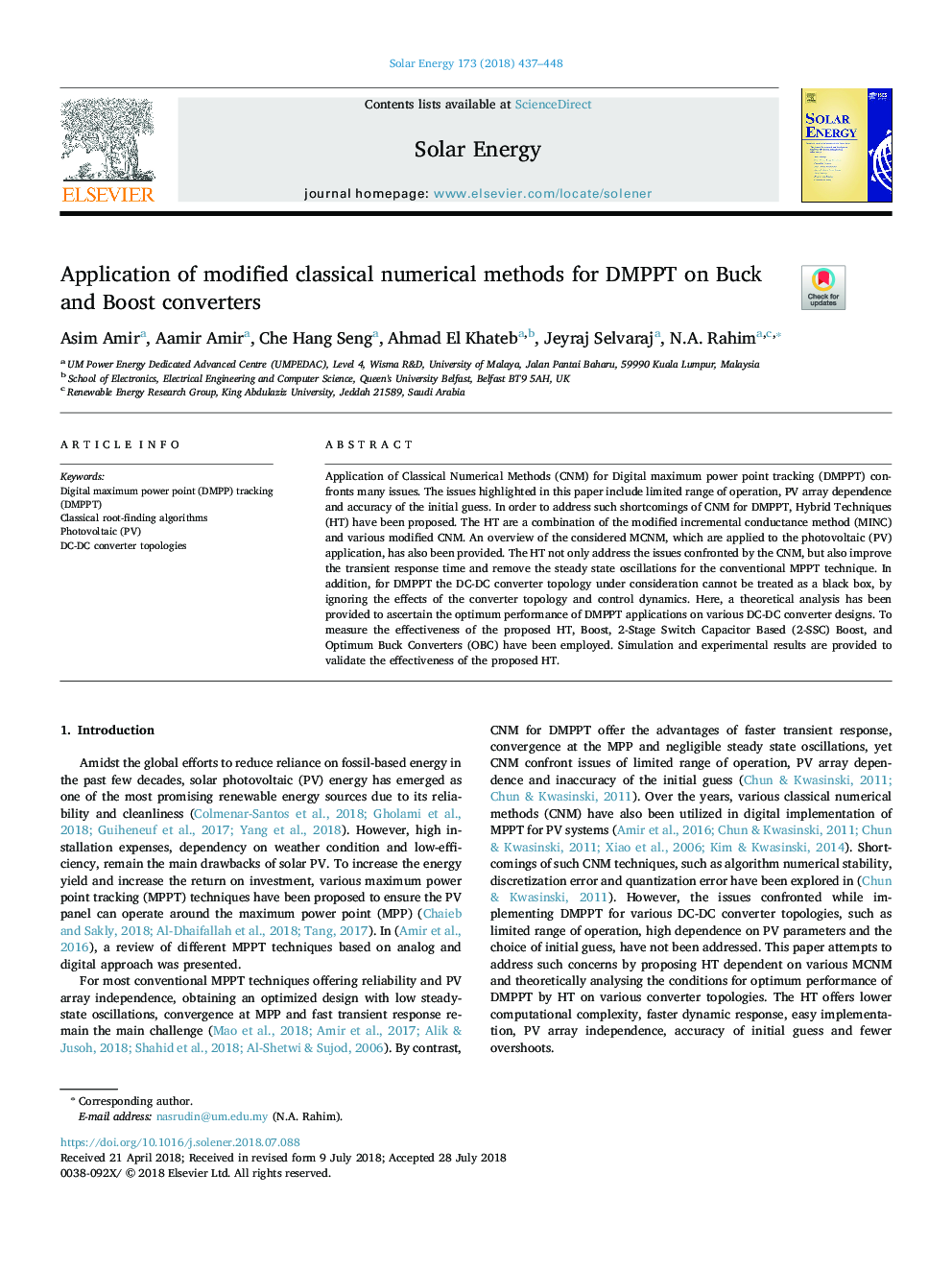| Article ID | Journal | Published Year | Pages | File Type |
|---|---|---|---|---|
| 7934931 | Solar Energy | 2018 | 12 Pages |
Abstract
Application of Classical Numerical Methods (CNM) for Digital maximum power point tracking (DMPPT) confronts many issues. The issues highlighted in this paper include limited range of operation, PV array dependence and accuracy of the initial guess. In order to address such shortcomings of CNM for DMPPT, Hybrid Techniques (HT) have been proposed. The HT are a combination of the modified incremental conductance method (MINC) and various modified CNM. An overview of the considered MCNM, which are applied to the photovoltaic (PV) application, has also been provided. The HT not only address the issues confronted by the CNM, but also improve the transient response time and remove the steady state oscillations for the conventional MPPT technique. In addition, for DMPPT the DC-DC converter topology under consideration cannot be treated as a black box, by ignoring the effects of the converter topology and control dynamics. Here, a theoretical analysis has been provided to ascertain the optimum performance of DMPPT applications on various DC-DC converter designs. To measure the effectiveness of the proposed HT, Boost, 2-Stage Switch Capacitor Based (2-SSC) Boost, and Optimum Buck Converters (OBC) have been employed. Simulation and experimental results are provided to validate the effectiveness of the proposed HT.
Keywords
Related Topics
Physical Sciences and Engineering
Energy
Renewable Energy, Sustainability and the Environment
Authors
Asim Amir, Aamir Amir, Che Hang Seng, Ahmad El Khateb, Jeyraj Selvaraj, N.A. Rahim,
